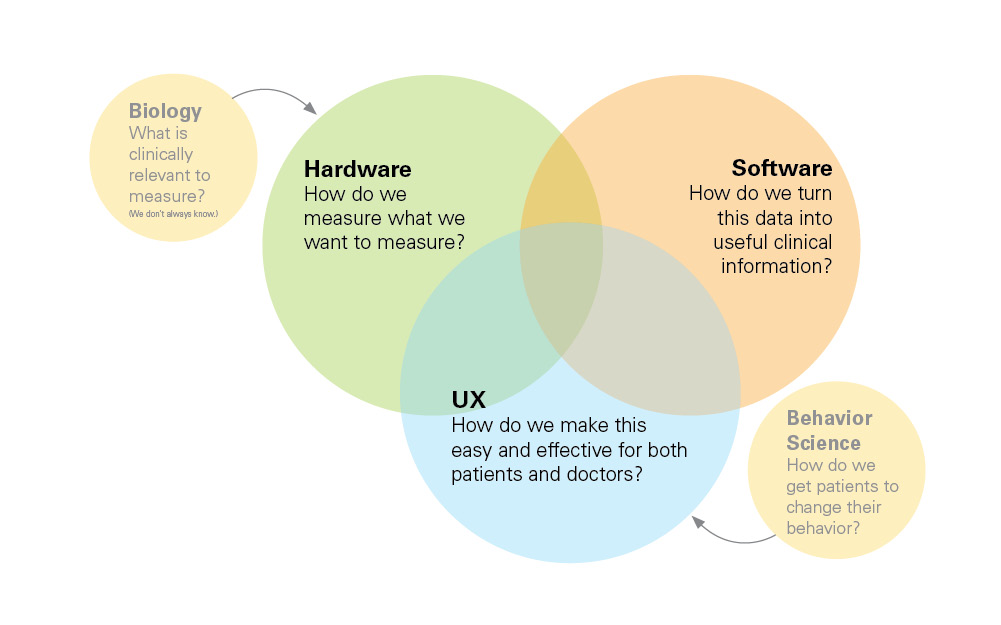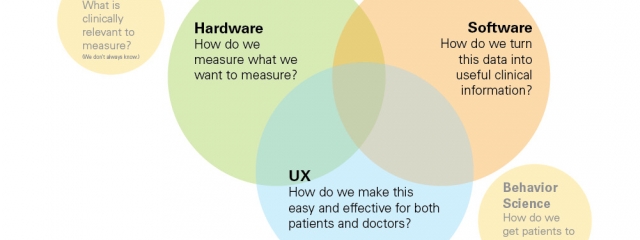This is the century where medicine will become information science. All aspects of health will be quantified with the help of healthcare logistics companies. Sensors on or inside a person’s body will send physiological and behavioral data wirelessly to the Cloud where algorithms will interpret that information in the light of the person’s medical history and genetic makeup and enable individuals to monitor their own health. Continuous and connected monitoring can drive healthcare costs down by keeping people healthier, avoiding unnecessary hospitalization, and ensuring that those who need care can get it sooner.

The facets of connected health.
This healthcare revolution consists of 3 big components: (1) Hardware – developing sensors and generating data, (2) Software – building the computational algorithms to turn all this data into useful insights, and (3) UX – displaying these insights in a way that is intuitive and compels both doctors and patients to act.
Fueling this venn diagram of health innovation are teachings from two core fields: biology and behavior science. Biology discovers the mechanisms of disease that inform engineers what their sensors should be measuring. Behavior Science tells us how to design for human nature so that our innovations lead to the desired behavioral change.
A successful product in the connected health space must lie at the center of this venn diagram. There is currently a jungle of products in each of the individual hardware-software-UX categories. Moving forward, the products that stand out will move more and more into the overlapping regions of blended physical-and-digital space.









